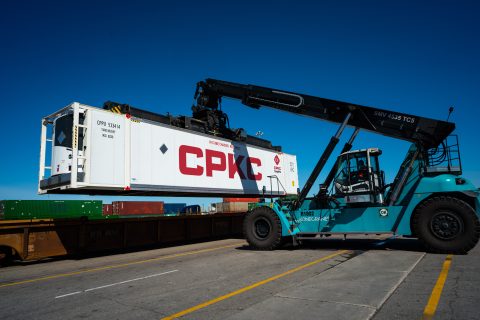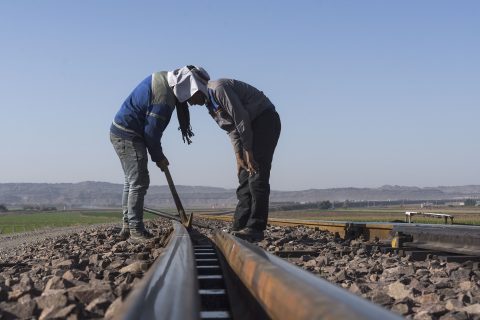Spanish freight operators disappointed with Mediterranean Railway Corridor

The Spanish Union of Intermodal Transportation Operators (UOTC) has criticised ongoing works on the Mediterranean Railway Corridor in Spain in a recently published report. They believe the corridor will not benefit the Spanish rail freight industry in spite of the investments made.
The main point of critique is that rail freight operations in Spain require a corridor with Iberian gauge (1,688 millimeter), rather than European gauge (1,435 millimeter), because most of Spanish and Portuguese trains operate on a 1,688 millimeter gauge. Adjusting these fleets so they can operate on the 1,435 millimeter gauge would become a costly project. Moreover, connectivity with the European railway network is not assured due to different electrical voltages of Spanish and North European trains, explained Juan Castellet, author of the report.
Passenger or freight traffic?
The lobby organisation further criticises the planned mixed use of the corridor by passenger and freight traffic at the same time. This combination of passenger and freight trains will cause traffic congestion, its report states. The speed difference between freight trains (120 kilometer per hour) and high-speed passenger trains (300 kilometer per hour) might result in two extreme situations: the high-speed passenger train may have to reduce its speed, or the freight train will have to divert. In addition, a railway track for passenger trains is not ready for freight traffic due to a difference of tonnage carried (400 tonne in passenger train versus 1,500 tonne in freight trains), UOTC states.
The union proposes the construction of a corridor with Iberian rail track gauge. It predicts the modal split share of rail freight will tumble from 4.5 per cent to 3.5 per cent if the currently planned European gauge track is realised instead.
Mediterranean Railway Corridor
The Mediterranean Railway Corridor, after crossing the coast of Spain, travels to France, Italy, Slovenia Croatia and Hungary and is of vital importance to the EU. Also the Spanish government considers the railway as a priority, because the Mediterranean region forms the main economic axis of Spain, consisting of Basque Country, Aragon, Navarra and Madrid. It accounts for fifty per cent of Spanish export and hosts the most important tourist destinations, welcoming 45 per cent of all tourists to Spain.
Whereas development of the corridor in the regions of Valencia and Catalonia is on schedule and infrastructure along this stretch set to be completed in 2020, a time frame for the completion of other parts of the Spanish network is still unknown, to the frustration of rail freight operators.
You just read one of our premium articles free of charge
Want full access? Take advantage of our exclusive offer




